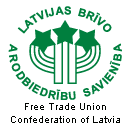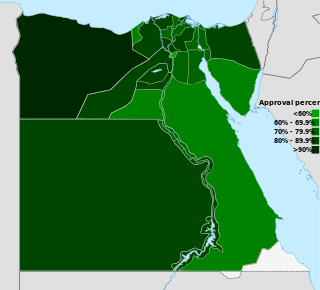 |
|---|
| This article is part of a series on the politics and government of Latvia |
| Foreign relations |
A constitutional referendum to amend the constitution of Latvia in order to allow one-tenth of the total registered electorate to initiate a popular referendum to dissolve the Latvian parliament was held in Latvia on 2 August 2008.

The Constitution of Latvia is the fundamental law of the Republic of Latvia. Satversme is the oldest Eastern or Central European constitution still in force and the sixth oldest still-functioning republican basic law in the world. It was adopted, as it states itself in the text, by the people of Latvia, in their freely elected Constitutional Assembly of Latvia on 15 February 1922 and came into force on 7 November 1922. It was heavily influenced by Germany's Weimar Constitution and the Swiss Federal Constitution. The constitution establishes the main bodies of government ; it consists of 115 articles arranged in eight chapters.
A referendum is a direct vote in which an entire electorate is invited to vote on a particular proposal. This may result in the adoption of a new law. In some countries, it is synonymous with a plebiscite or a vote on a ballot question.
In parliamentary and some semi-presidential systems, a dissolution of parliament is the dispersal of a legislature at the call of an election.
Contents
- Background
- Procedure for calling a referendum
- Collection of signatures
- Referendum campaign
- "No" campaign
- "Yes" campaign
- Results
- Reactions
- References
The referendum on this issue was triggered when the Government of Latvia voted against an opposition motion to adopt this change to the constitution, which resulted in a referendum in Latvia by law. President Valdis Zatlers and the left-wing opposition were in favour of the referendum, while the government was against it, arguing that it would cause even more instability in a country which has seen 13 governments in the 18 years since independence. At least half of the total registered electorate (i.e. more than 757,607) had to approve the referendum proposal in order for it to be valid. [1] [2]

The Government of Latvia is the central government of the Republic of Latvia. The Constitution of Latvia (Satversme) outlines the nation as a parliamentary republic represented by a unicameral parliament (Saeima) and the Cabinet of Ministers of the Republic of Latvia, which form the executive branch of the Government of Latvia.

The President of Latvia, is head of state and commander-in-chief of the National Armed Forces of the Republic of Latvia.

Valdis Zatlers is a Latvian politician and former physician who served as the seventh president of Latvia from 2007 to 2011. He won the Latvian presidential election of 31 May 2007. He became President of Latvia on 8 July 2007 and left office on 7 July 2011 after failing to win reelection for a second term.
Preliminary results indicated that an overwhelming 96% of voters had voted in favour of the amendment, although only about 40% of the electorate voted in favour, which means the referendum is invalid. [3] It is expected that the strong result, while failing to directly change the constitution, might press politicians to adopt a similar measure nonetheless. [4]
If passed, the amendment would have represented the first time in an EU country that voters would have been able to dissolve their national parliament - a right traditionally reserved for the head of state. [5]

The European Union (EU) is a political and economic union of 28 member states that are located primarily in Europe. It has an area of 4,475,757 km2 (1,728,099 sq mi) and an estimated population of about 513 million. The EU has developed an internal single market through a standardised system of laws that apply in all member states in those matters, and only those matters, where members have agreed to act as one. EU policies aim to ensure the free movement of people, goods, services and capital within the internal market, enact legislation in justice and home affairs and maintain common policies on trade, agriculture, fisheries and regional development. For travel within the Schengen Area, passport controls have been abolished. A monetary union was established in 1999 and came into full force in 2002 and is composed of 19 EU member states which use the euro currency.
A head of state is the public persona who officially represents the national unity and legitimacy of a sovereign state. Depending on the country's form of government and separation of powers, the head of state may be a ceremonial figurehead or concurrently the head of government. In a parliamentary system the head of state is the de jure leader of the nation, and there is a separate de facto leader, often with the title of prime minister. In contrast, a semi-presidential system has both heads of state and government as the leaders de facto of the nation.












